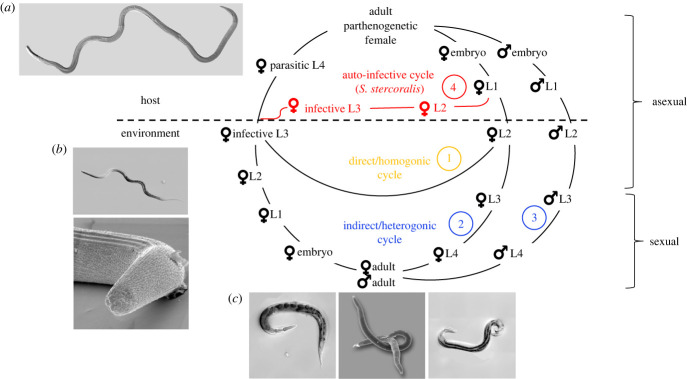Figure 1.
Life cycle of Strongyloides stercoralis. For explanations see text. The circled numbers refer to the developmental option numbers in the text. This life cycle also applies, with small modifications, to other species of Strongyloides. i.e. the autoinfective cycle appears specific for S. stercoralis; in some species the young larvae hatch while still in the host, while in other species embryonated eggs are passed; in S. planiceps multiple consecutive free-living generations are possible (for more information and references see text). The images show Strongyloides papillosus (a) adult parasitic female (top left): in this differential interference contrast (DIC) image, the worm is about 5 mm long (the size of adult females varies between species of Strongyloides; in S. stercoralis they are about 2.5 mm [1]); (b) infective L3 (bottom left): DIC image (upper panel) and scanning electron microscopic (SEM) image (lower panel); the worm is about 0.6 mm long; (c) free-living adults (bottom), DIC image of a female (left panel), DIC image of a male (right panel), SEM image of a mating couple (middle panel). The free-living adults are about 1 mm long.

